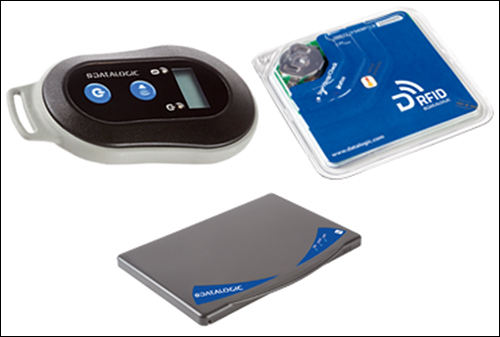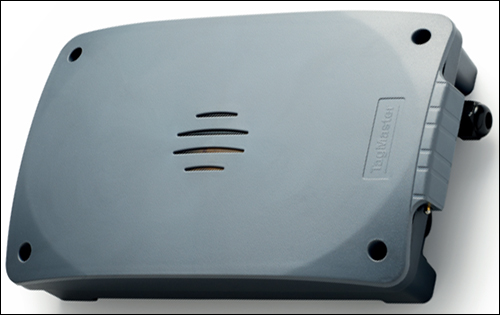Feb 09, 2017The following are news announcements made during the past week by the following organizations:
SATO Healthcare, Mie University Hospital; Datalogic; MSS Software; TagMaster; and Imec.
SATO Healthcare Partners With Mie University Hospital to Develop Patient Wristbands, Establishes Group Company in Taiwan
SATO , a provider of automatic-identification solutions, has announced that it will jointly conduct the first clinical study of ultrahigh-frequency (UHF) RFID tags in Japan, in partnership with Mie University Hospital. The study will aim to decrease the burden on patients and the workload of hospital personnel through the implementation of UHF RFID wristbands.
The first step of the joint research, the companies report, will be to determine whether UHF RFID readers have any effect on pacemakers and other implantable medical devices. The clinical study, launched in December 2016, is slated to be completed in December 2018, and will look at all patients, age 18 or older, who are admitted to the hospital. The existing bar-code system that Mie University Hospital has utilized for the administration of medication and collection of blood samples employs three-point verification to cross-check data. The hospital sought to improve upon such drawbacks as disturbing sleeping patients at night and occasional read errors caused by smudges or deformations of wristband bar codes.
Through the implementation of UHF RFID tags from SATO Healthcare, the partners explain, data can be read from a distance, making physical contact with a reader unnecessary. During tests conducted prior to the study's launch, data could often be read even with blankets or other obstructions coming between the chip and the reader.
UHF RFID tags are lower in cost than high-frequency (HF) tags and have a greater and more flexible read range. The low-power readers used during the clinical study had no effect on pacemakers or defibrillators regardless of distance, the companies indicate, citing a report by Japan's Ministry of Internal Affairs and Communications.
"UHF tags are here," said Yoshinori Azumi, the deputy chief of Mie University Hospital's Department of Medical Informatics, in a prepared statement. "They provide data verification at low cost and hold great promise for the future by easing the burden of nurses and other staff that cross-check patient data."
"Non-RFID wristbands can ensure patient safety, but UHF wristbands do more—they improve patient comfort," said Hiroyuki Konuma, SATO Healthcare's president, in the prepared statement. "The ability to read tags from a distance means that caregivers now do not have to unnecessarily move patients to read their wristbands when sleeping. This system is a breakthrough that can ensure the highest levels of accuracy and comfort."
In addition, SATO has announced that SATO Holdings has established a 100 percent owned sales subsidiary called SATO Taiwan Co., Ltd. SATO first established its presence in Taiwan in 2012 with the acquisition of Argox, a manufacturer of compact printers for emerging and industrial markets. According to SATO, its SATO Taiwan subsidiary was established to meet the potential new demand in Taiwan for auto-ID solutions to streamline operations, in order to keep up with an accelerating trend of organizations implementing IT systems and a rapidly aging population.
The new company will coordinate closely with Argox and other SATO companies in the Asia-Pacific region to provide solutions integrating bar-code and RFID printers, readers, software, labels and other consumables. It will specifically focus on hospitals, health centers and other health-care institutions, to provide patient wristbands with the aim of capturing a 30 percent market share in patient-identification solutions by 2020.
Datalogic Offers New Readers, Temperature Logger
Datalogic, a provider of automatic data-capture and industrial-automation products, bar-code readers, mobile computers and other products, has announced three new ultrahigh-frequency (UHF) RFID products: the DLR-BT001 RFID pocket reader with Bluetooth wireless technology, the DLR-TL001 temperature logger and the DLR-DK001 desktop UHF RFID reader.
Datalogic's RFID products are used in various applications around the globe, the company reports. The technology assists in stock level optimization and traceability for assuring item availability in non-food retail, the company explains, and supply chains leverage its offerings to reduce claims and returns, assure proof of delivery and ensure loss prevention. Health-care enterprises, meanwhile, use RFID to track medical devices and drugs, monitor temperature-sensitive items and control the delivery of drugs and laboratory samples.
"Datalogic has long been a proponent and developer of RFID technology and continues to elevate its implementation within our target industries," said Pietro Todescato, Datalogic's CTO, in a prepared statement. "Our innovative RFID offerings and industry-leading automation and data-capture solutions deliver our clients a wide and deep pool of technology for every application." The new products offer the following features:
DLR-BT001 reader: USB and Bluetooth wireless communications, SPP and HID Bluetooth profiles, an integrated linear-polarized antenna, read and write options, a small form factor, an LCD display, vibration feedback, and iPhone/iPad compatibility. It can be battery-powered or recharged via a USB connection.
DLR-DK001 reader: USB power and communication (no external power supply needed), a low profile, a compact design, and an integrated circular-polarized antenna.
DLR-TL001 temperature logger: Low-cost temperature logging, reliable data collection with high temperature accuracy, button and LED functions for fast inspection, and extended monitoring.
MSS Software Intros Ultra-Rugged Mobile Readers
MSS Software, a bar-code solutions provider specializing in bar-code rental equipment, has begun selling mobile RFID reader equipment to customers via its website. According to the company, individuals and businesses use the readers for tracking assets, products and individuals.
MSS Software's RFID-Barcode Tracking Kit is a portable, mobile RFID reader. According to MSS Software, a primary feature of the device is the ability to customize and configure the tracker in order to read and write both RFID tags and bar codes. The firm reports that the reader can interrogate tags, depending on the type, from as far away as 20 feet.
The RFID-Barcode Tracking Kit is suitable for maintaining inventory across multiple locations, the company reports, due to its small size and portability. The device can collect, store and transfer data; save collected data in multiple formats; and transmit information via a USB, Ethernet or Wi-Fi connection.
The kit includes a rugged, mobile RFID computer designed for the demanding environments often associated with tracking inventory. Its industrial-grade materials and ergonomics make it suitable for use in a variety of environments, the firm notes, including under poor lighting conditions.
TagMaster Unveils Mini UHF Reader for Access Control
TagMaster has announced that its XT Mini Reader is designed for access-control applications. According to the company, the device can be mounted to a pole near a vehicle lane. The reader has a small physical size and comes with an integrated circular-polarized antenna and a built-in access controller.
The XT Mini Reader offers a long read range, a long product life time, high reliability and low cost of ownership, the company reports. It has an IP-66 rating, meaning it is weatherproof and thus can be used outdoors.
The reader can be integrated into an access-control system with a minimum of installation and configuration, according to TagMaster. It typically uses Wiegand or magstripe for integration, and RS-232, RS-485 and Ethernet interfaces are available as well. The XT Mini supports the OSDP protocol; support of the SKIDATA BLL4 protocol is available optionally.
The XT Mini's Easy Configuration feature supports common access-control systems, the firm indicates, reducing configuration time to only a few seconds. The device can operate as a standalone product, with external equipment connected directly to the internal relay. The reader is fully compliant with the EPC Gen 2 (ISO 18000-63) standard.
Imec Debuts Plastic NFC Tag
At the 2017 International Solid-State Circuits Conference, held this week in San Francisco, imec, a research and innovation hub in nanoelectronics and digital technologies, in cooperation with Holst Centre and Cartamundi, demonstrated a thin-film tag on plastic, compatible with the Near Field Communication (NFC) standard. The tag is manufactured in a thin-film transistor technology using indium gallium zinc oxide thin-film transistors (IGZO TFT) on a plastic substrate.
Plastic electronics allow for low-cost smart electronic devices, the companies report. Applications include item-level identification, smart food packaging, brand protection and electronic paper, which require a continuous supply of disposable devices. According to imec, its IGZO TFT technology utilizes large-area manufacturing processes that allow for inexpensive production in large quantities.
"Making a plastic electronics device compatible to the ISO standard originally designed for silicon CMOS was a very challenging research and development expedition" said Kris Myny, a senior researcher at imec, in a prepared statement. "Our collaboration with Cartamundi enabled us to develop a truly industry-relevant solution."
The researchers developed a self-aligned TFT architecture with scaled devices optimized for low parasitic capacitance and high cut-off frequency. This allowed the design of a clock division circuit to convert incoming 13.56 MHz carrier frequency into the system clock of the plastic chip. Optimizations at the logic gate and system levels reduced power consumption to 7.5mW, enabling readout by commercial smartphones.
"This innovative hardware solution of plastic NFC tags opens up several new possibilities for NFC deployments," said Alexander Mityashin, a program manager at imec, in the prepared statement. "Thanks to the nature of thin-film plastics, the new tags can be made much thinner and they are mechanically very robust. Moreover, the self-aligned IGZO TFT technology offers manufacturing of chips in large volumes and at low cost".
The research team presented their results in a paper titled "A Flexible ISO14443-A Compliant 7.5mW 128b Metal-Oxide NFC Barcode Tag with Direct Clock Division Circuit from 3.56MHz Carrier."



